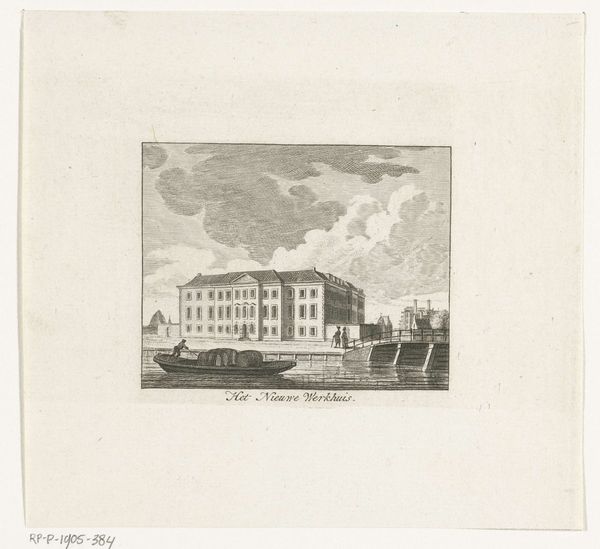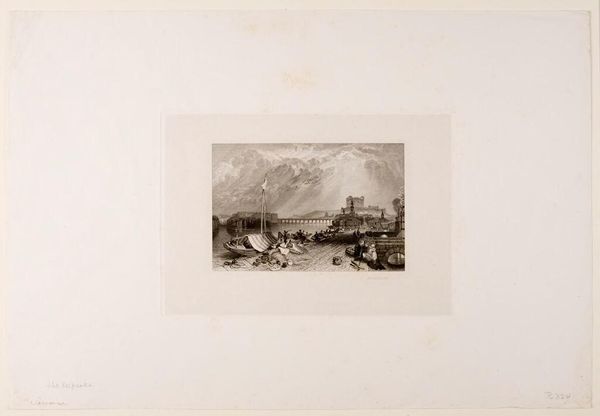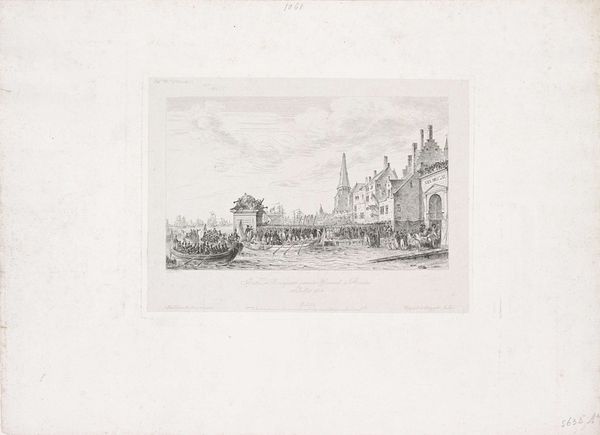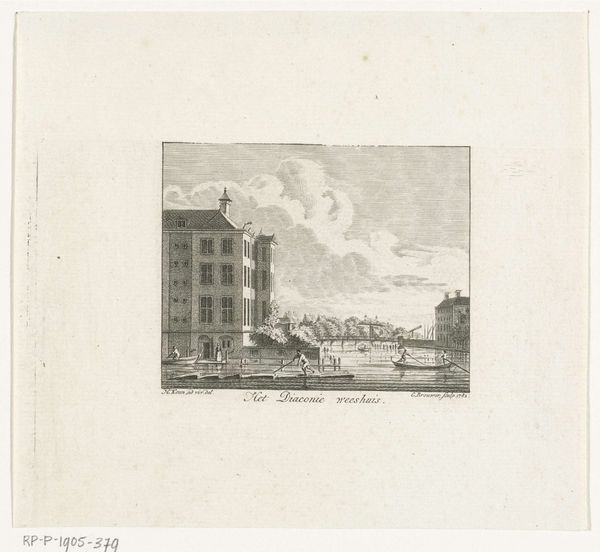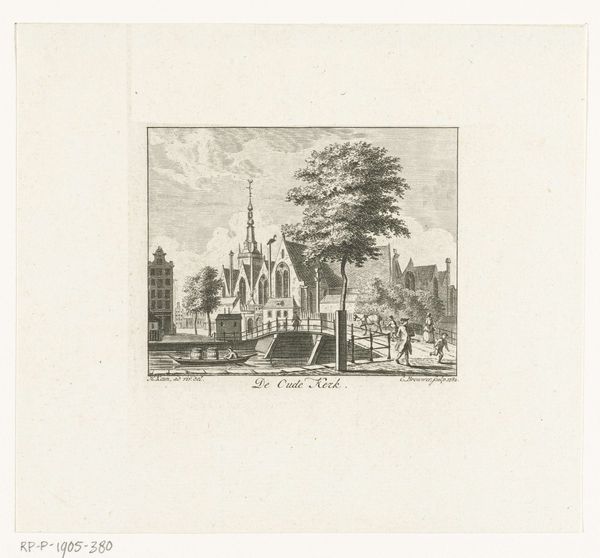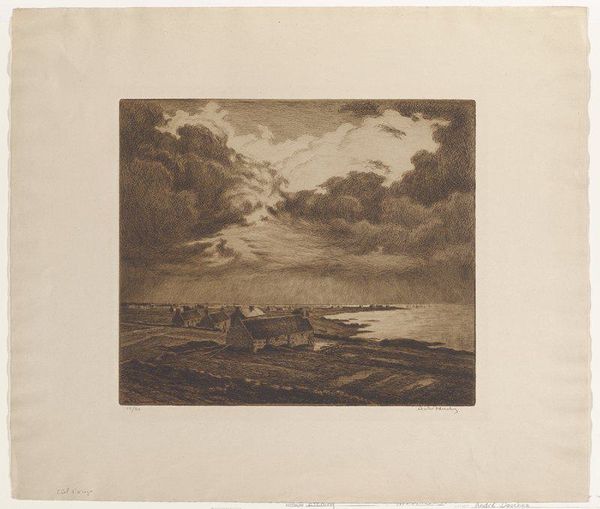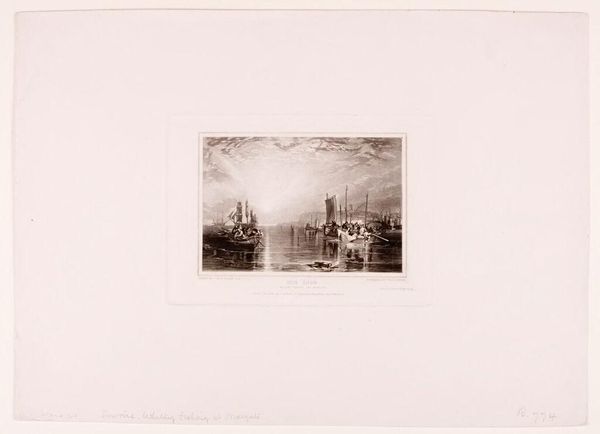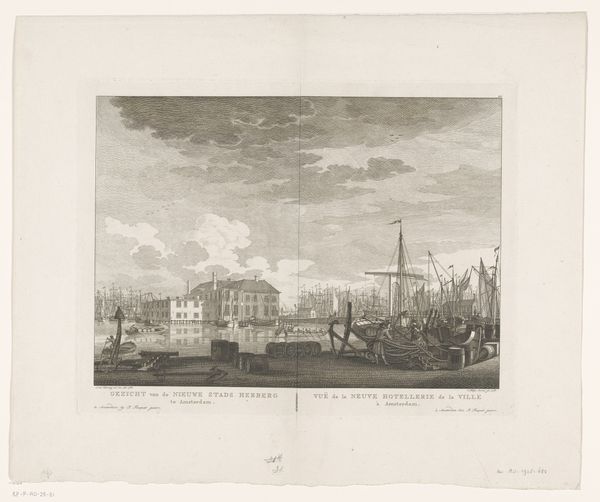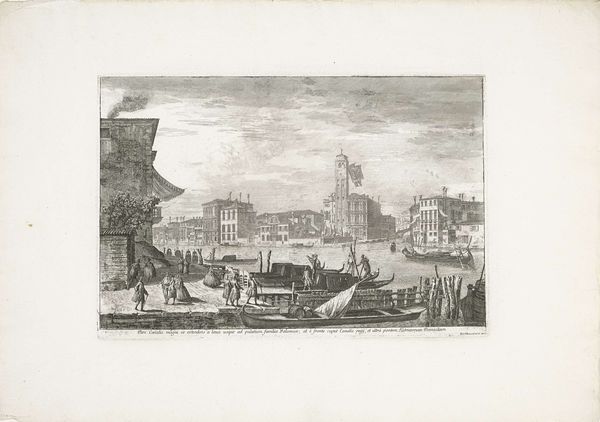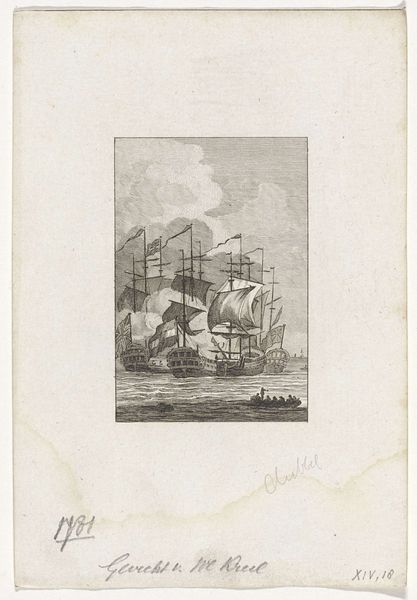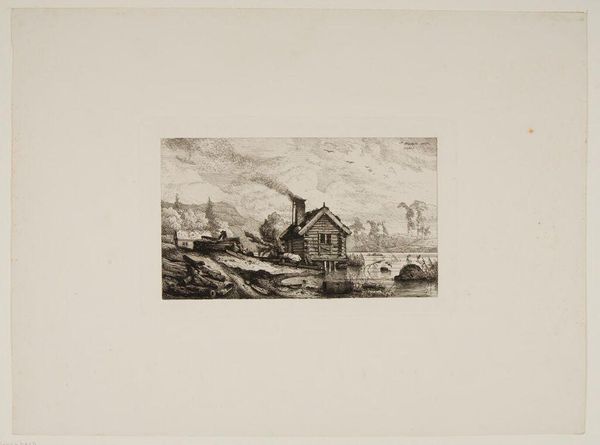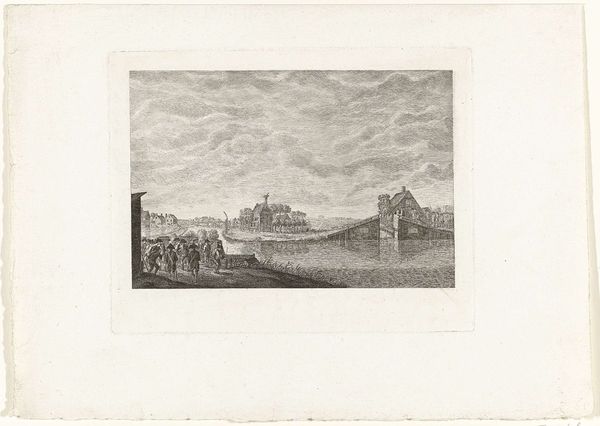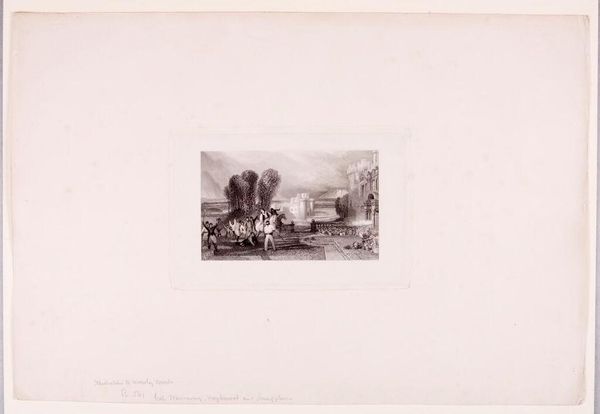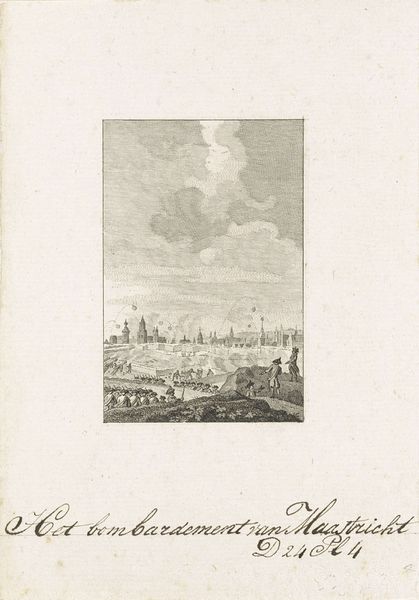
Dimensions: height 131 mm, width 142 mm
Copyright: Rijks Museum: Open Domain
Editor: This is "Stadsgezicht met Admiraliteitswerf te Amsterdam," a cityscape of Amsterdam's shipyard by Cornelis Brouwer from 1782. It’s a print, an engraving. I am struck by the contrast between the large warship in the center and the detailed rendering of the architecture on either side. What historical contexts might have shaped Brouwer’s depiction here? Curator: That's a great observation. Think about what a shipyard like this represented in 1782. It wasn’t just commerce; it was about power, military might, and the projection of Dutch colonial ambitions. This print isn't a neutral record. It participates in constructing a particular narrative around Dutch identity and its relationship to maritime power. Editor: So, the glorification of the warship isn't just about aesthetics, but about reinforcing political ideologies of the time? How does that tie into the domestic sphere of Amsterdam? Curator: Precisely. Amsterdam, in particular, was at the heart of the Dutch mercantile empire. The visual prominence given to the shipyard can be understood as a statement of national pride and economic prowess – but it also hints at the violent history of colonial expansion. Who benefited from that prosperity, and who was exploited? We need to ask these questions to contextualize the artwork within power structures. Editor: I see your point. Looking at the print now, I notice the absence of, say, the enslaved laborers or the resources plundered to fuel this shipyard. The print seems to tell only one side of the story. Curator: Exactly. What would a print look like if it focused on the stories of the colonized, or those marginalized in the shipbuilding process? How would that change our understanding of the artwork? This perspective asks us to consider who has the power to represent history and whose stories remain untold. Editor: This reframing has certainly given me a lot to think about in terms of the complex layers of power and representation within the artwork. Curator: And by bringing a critical eye, questioning the narratives presented, we gain a more profound engagement with history and its art.
Comments
No comments
Be the first to comment and join the conversation on the ultimate creative platform.
